
The Church of St. Nicholas or St. Nicholas Cathedral (Kostel svatého Mikuláše Mala Strana) is an instant Baroque church in the Small Country (Small Town) in Prague, in the high bell tower of which there is a public observation deck, and in the adjacent building of the former Jesuit house there are remains of a Romanesque rotunda.
The church is also known, translated from Czech, as the Church of St. Mikulas.
Due to its monumentality and architectural and artistic treatment, the Church of St. Nicholas in Malaya Strana is one of the most artistically significant Baroque buildings in Prague.
The church is located in the historical center of Prague, on Malostransk Square (Malostranské náměstí), and its tall tower is visible from many points of the nearby streets.

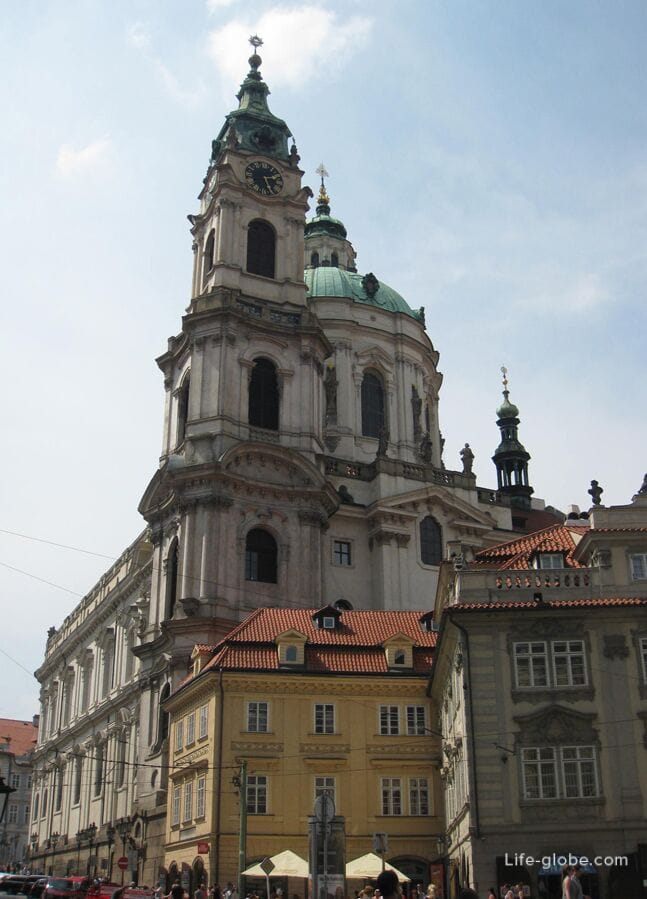
The Little St. Nicholas Church stands on the site of the original Gothic church of St. Nicholas, dating from the 13th century, and which, together with the neighboring crowbars, were transferred to the Jesuits in 1625.
The construction of a new Baroque church, together with the surrounding complex of buildings, was started by the Jesuits in the second half of the 18th century, designed by Giovanni Domenico Orsi, and after the Bavarian architect Christoph Dinzenhofer, then his son Kilian Ignaz Dinzenhofer. The church itself was built in two stages during the 18th century.
After the abolition of the Jesuit Order by Pope Clement XIV in 1775, the church of St. Nicholas became the main parish church of the Small Town.
The church is described as the most impressive example of Prague Baroque and as the greatest Baroque church in Prague, as well as the highest achievement of the Dinzenhofers.
The church is decorated with sculptures and niches.
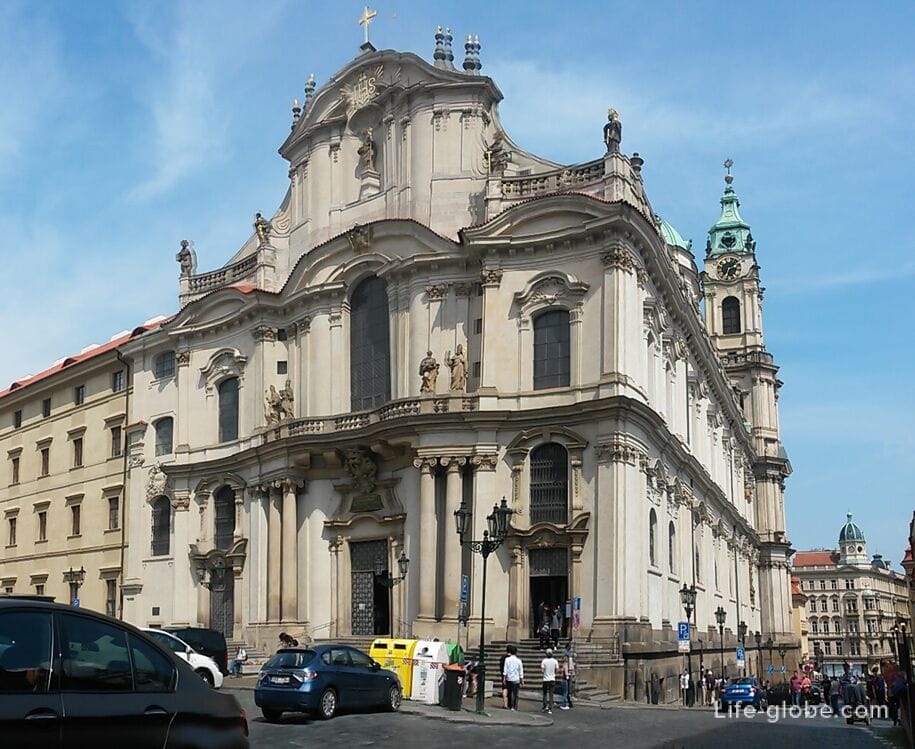

On the shield of the church, under the balcony and above the portal, the coat of arms of the alleged patron of the church of Frantisek Karel, Count Kolovrat-Liebstein, is depicted.
But the mention of the largest patron of the church, who donated all his property for the construction of the shrine, Vaclav Count Kolovrat-Liebstein, is not on the facade, because he was a very modest man.
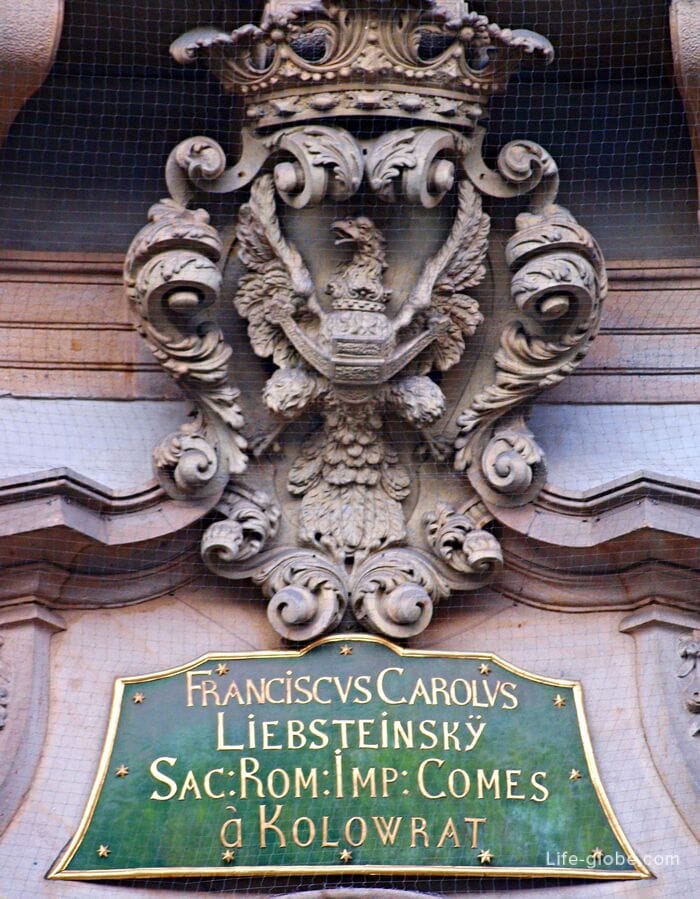
The Church of St. Nicholas in Malaya-Strana stands out not only for its architecture, but also for its decoration.
The interior features frescoes by Jan Lukasz Kracker and frescoes inside the 70-meter dome by Frantisek Xaver Palko. The interior is decorated with sculptures by František Ignaz Platzer.
The Baroque organ of the church was created by the Jesuit organist Thomas Schwartz from three instruments. Two of them have survived to this day: a large organ in the main choir (currently unplayable) and a smaller organ in the side hall of 1745. Mozart's impressive masterpiece, the Mass in C, was first performed in the Church of St. Nicholas.
The positive organ, created in 1831 by organist Josef Gartner, is also sometimes used during concerts. This one-handed instrument with six registers is located on the ground floor of the church in the area under the dome and is mainly used for the interpretation of early Baroque and ancient music.
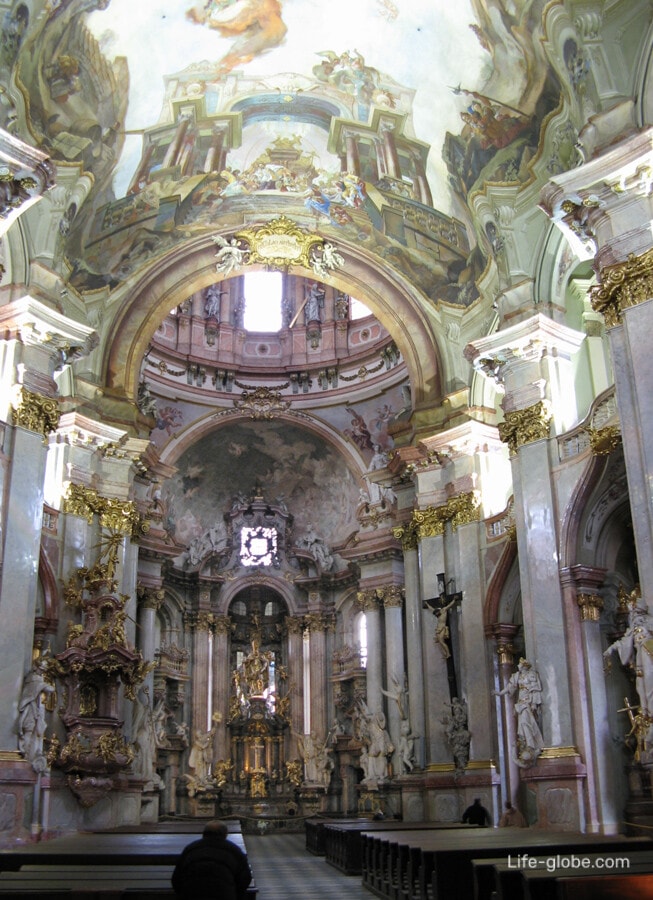
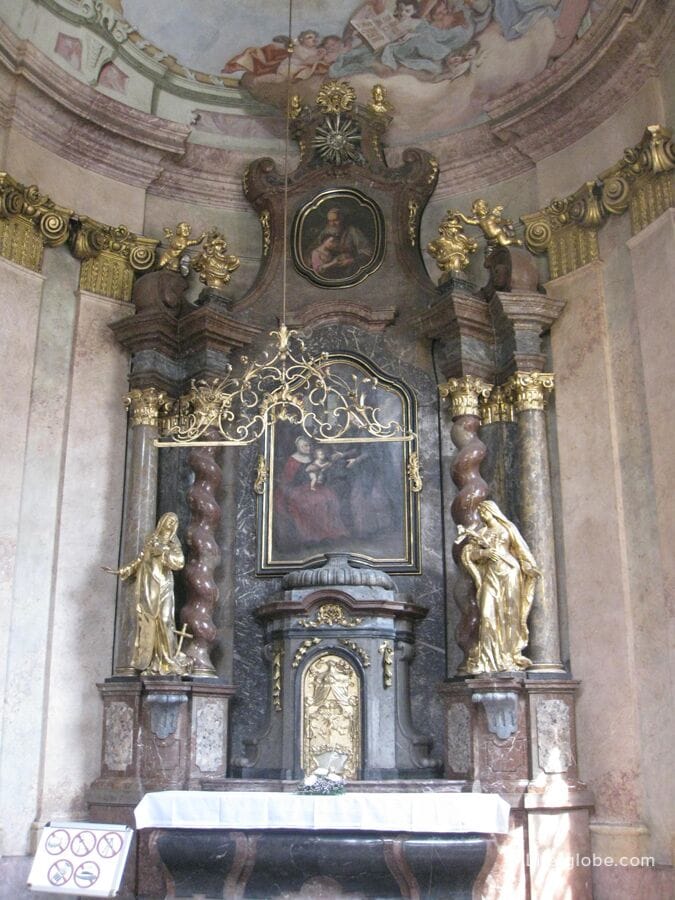
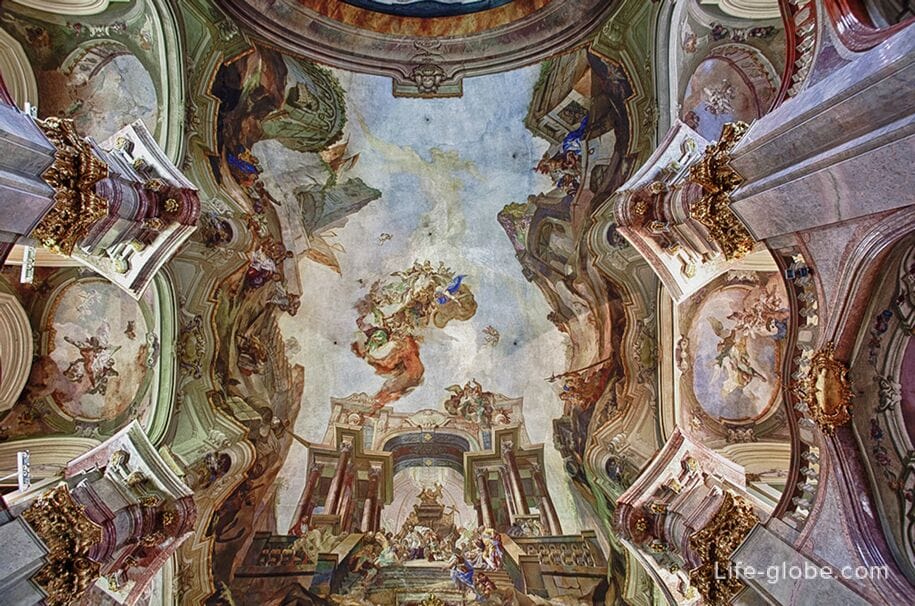
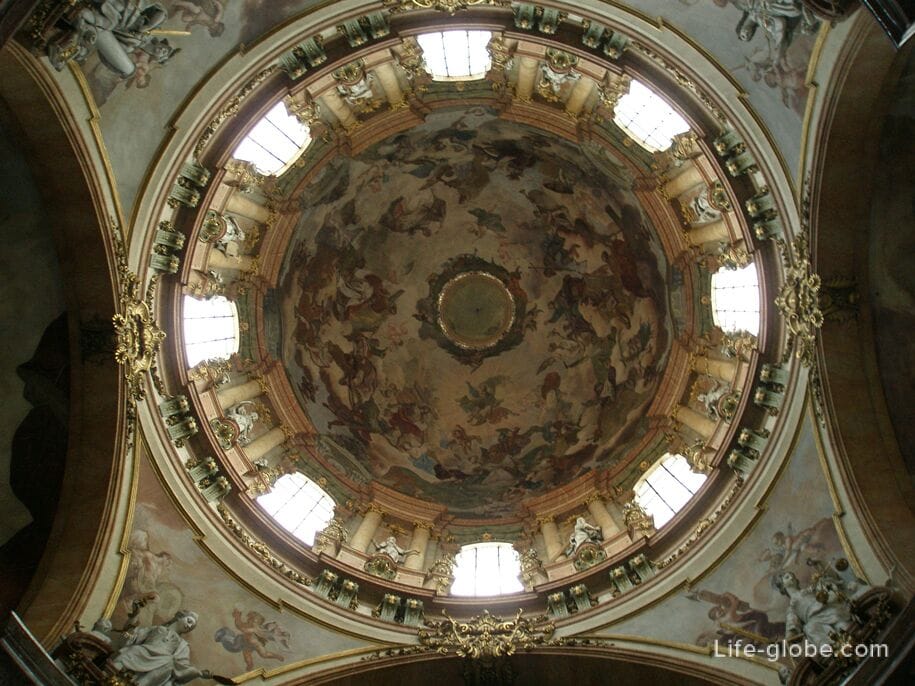
The church hosts divine services and organ and church music concerts.
Entrance to the church is paid. Tickets can be purchased at the entrance.
Website of the Church of St. Nicholas in Malaya-Strana: stnicholas.cz .
The address of the Church of St. Nicholas in Mala Strana: Malostranské nám., 118 00 Malá Strana, Czech Republic.
The bell tower of the Church of St. Nicholas was erected by 1755 and during its history also served as a fire warning tower (it was the last signal tower in Prague). Since the 1960s, it has been a state security observatory to monitor Western embassies around the tower.
The bell tower has the same height as the dome of the church of St. Nicholas, but externally differs from the general style of the church itself.

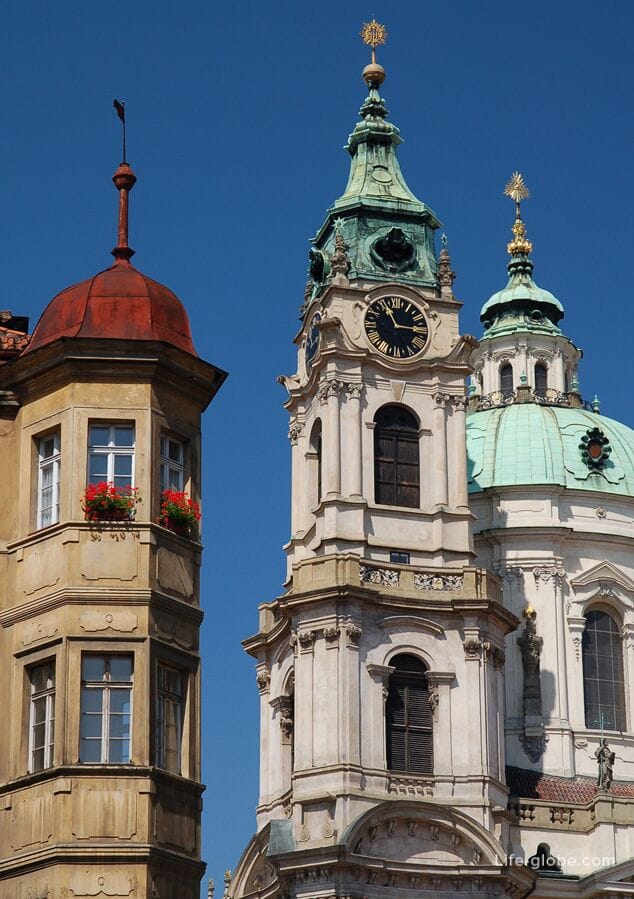
Today, the tower belongs to the city (the Small Country of Prague), and not to the church. This fact is expressed by the coat of arms of a Small Country above the entrance to the tower.
The name of the tower is the Nikolskaya City Bell Tower (Svatomikulášská městská zvonice).
At a height of 65 meters, in the gallery of the tower, there is a public observation deck, which is reached by 215 steps. From the observation deck there are wonderful panoramic views of Prague.
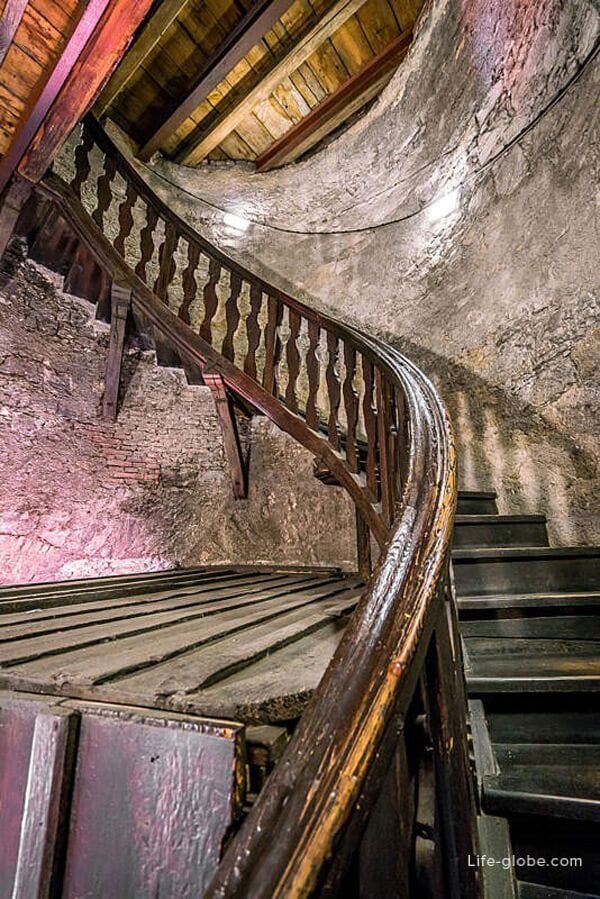
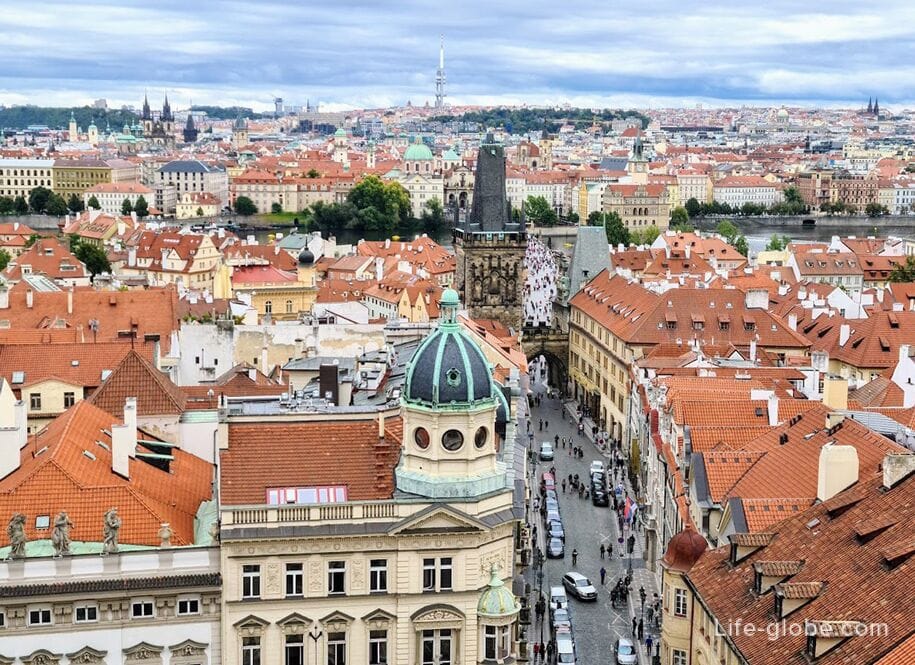

In the tower itself there is an exhibition "Custos Turris / City Ranger", where visitors can see the apartment of the builder of the tower of the second half of the 18th century, which has a black kitchen - the only available black kitchen in Prague. This part is followed by the newsroom - the place where the tower operator performed his functions.

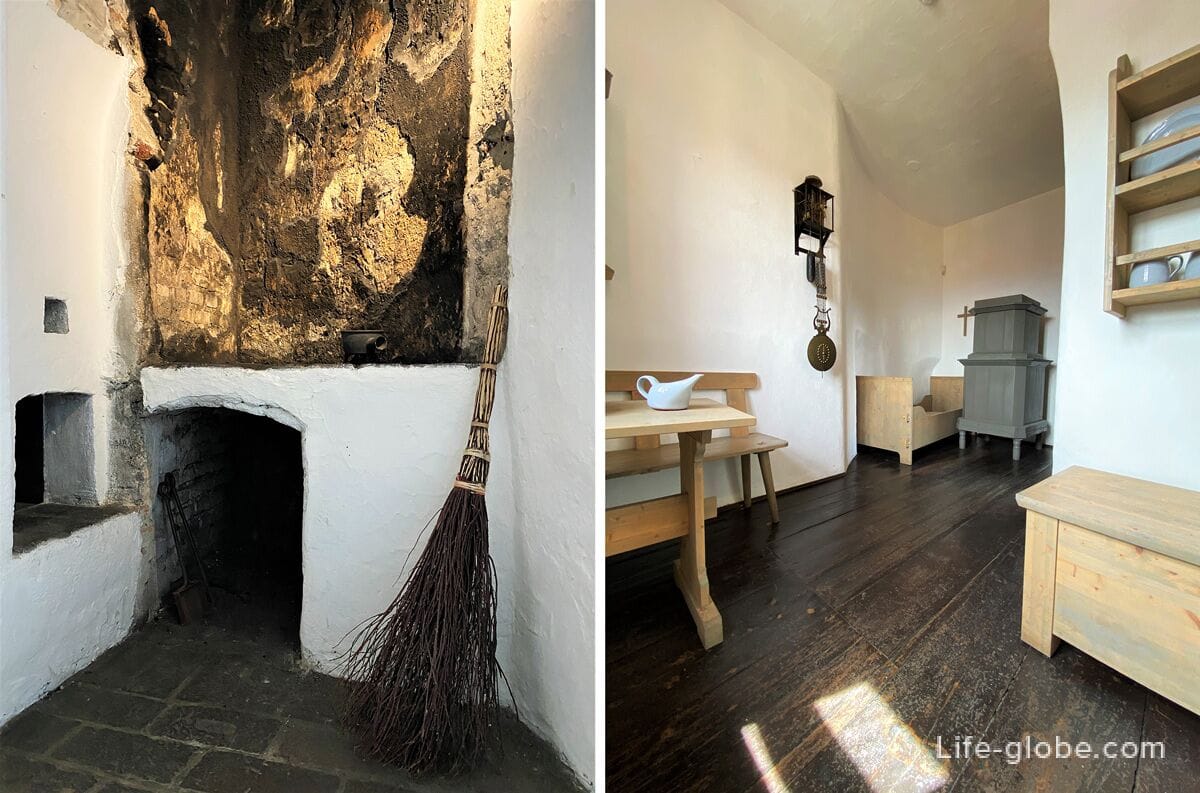
The ascent to the observation deck is paid. Tickets can be purchased at the entrance.
You can view the exhibition in the tower when climbing to the observation deck.
The entrance to the tower is separate from the entrance to the Church of St. Nicholas and is located at: Malostranské nám. 556/29, 110 00 Malá Strana, Czech Republic.
The Professional House (Profesní d?m) is a former Jesuit house, which is adjacent to the Church of St. Nicholas and is a large building in the early Baroque style.
Together with the Church of St. Nicholas and several houses, it forms a block dividing Malostranskaya Square into lower and upper parts.
Originally, the building served as the home of the so-called professional brothers of the Society of Jesus (Jesuits), members of the order who made famous vows. However, this was not the place where the Jesuits lived, they only maintained a gymnasium in a nearby building. Today the building houses the Faculty of Mathematics and Physics of Charles University.
View of the Professional House and the Church of St. Nicholas from Malostranskaya Square
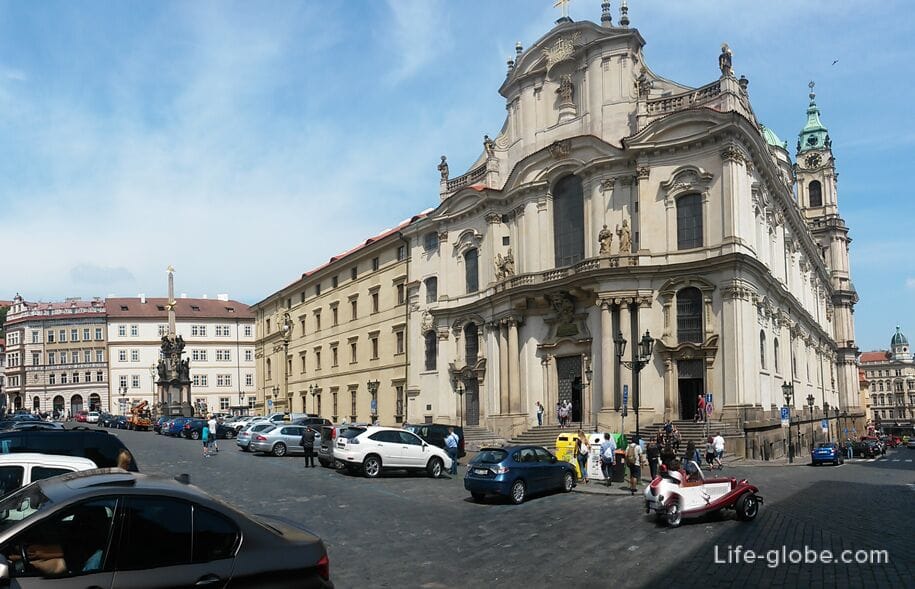
At the northwest corner of the former Jesuit house are the remains of the Romanesque Rotunda of St. Wenceslaus (Rotunda Sv. Václava).
A rotunda is a general designation for a type of early medieval church building. But in this place, it is a former Romanesque church with a round nave and an almost semicircular apse.
The rotunda space is a relatively small area. During the excavations of the rotunda, archaeologists found a collection of jewelry from the 9th and 10th centuries, six skeletons of a knightly family from the time of John of Luxembourg and more than 3,000 fragments of vessels. However, the finds of parts of the rotunda building itself are also of great importance, including the paving stones on the floor.
All this makes the ruins of the rotunda one of the most important archaeological monuments of Prague, since, probably, all this suggests that the first Christian church of a Small Country and the oldest church outside of Prague was located in this place.Prague Castle.
Rotunda website: nase-rotunda.cz .
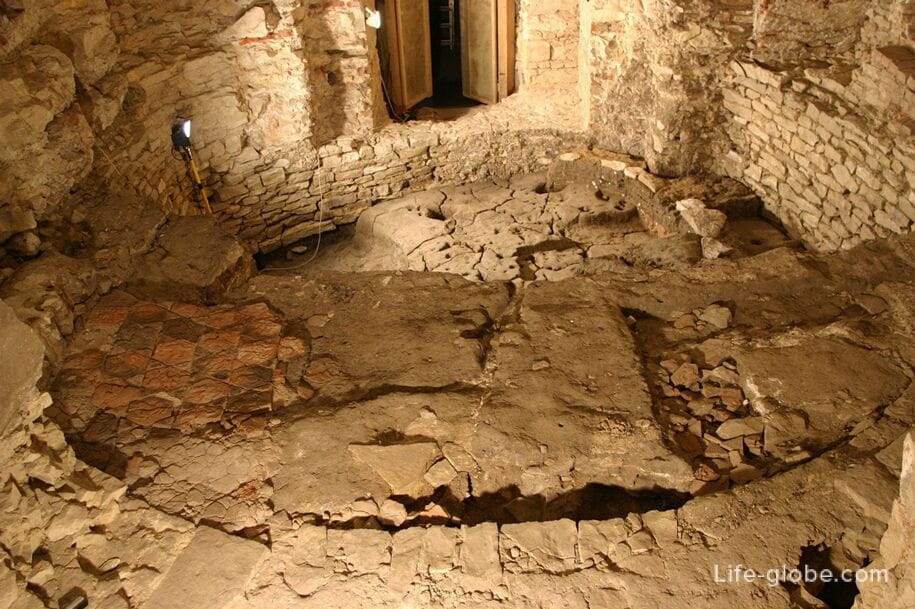
All accommodation facilities in Prague (hotels, apartments, guest houses, etc.), including in the historical center of the city and more remotely from it, can be viewed and booked here